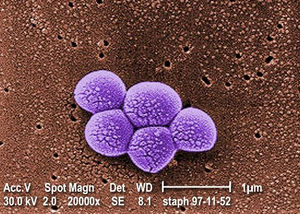Faecalibacterium prausnitzii Relating to Gastroenterology Diseases
Introduction

By Kayla Arone
Faecalibacterium prausnitzii is a Gram-negative bacterium, non-sporeforming and extremely oxygen sensitive. This type of gut bacteria is the most abundant bacterium in the human gut, accounting for 5-15% of the total bacterial population in the gut. It is very prevalent in human populations as it is detected in 85% of gut samples and F. prausnitzii is considered to be very prevalent in the GI track of humans. Levels of F. prausnitzii differ by age and gender as well with lower levels in women than men. Levels of F. prausnitzii can be first detected around 6-7 months of age and the abundance rises at around 2-3 years old suggesting that there are different evolutionary stages of F. prausnitzii. Decreased F. prausnitzii levels are observed in various forms of different inflammatory bowel disease (IBD), Crohn’s disease (CD), ulcerative colitis (UC), and colorectal cancer (CRC).
The insertion code consists of:
Double brackets: [[
Filename: PHIL_1181_lores.jpg
Thumbnail status: |thumb|
Pixel size: |300px|
Placement on page: |right|
Legend/credit: Magnified 20,000X, this colorized scanning electron micrograph (SEM) depicts a grouping of methicillin resistant Staphylococcus aureus (MRSA) bacteria. Photo credit: CDC. Every image requires a link to the source.
Closed double brackets: ]]
Other examples:
Bold
Italic
Subscript: H2O
Superscript: Fe3+
Sample citations: [1]
[2]
A citation code consists of a hyperlinked reference within "ref" begin and end codes.
To repeat the citation for other statements, the reference needs to have a names: "<ref name=aa>"
The repeated citation works like this, with a forward slash.[1]
Section 1
Include some current research, with at least one figure showing data.
Every point of information REQUIRES CITATION using the citation tool shown above.
Section 2
Include some current research, with at least one figure showing data.
Section 3
Include some current research, with at least one figure showing data.
Section 4
Conclusion
References
Authored for BIOL 238 Microbiology, taught by Joan Slonczewski,at Kenyon College,2024
